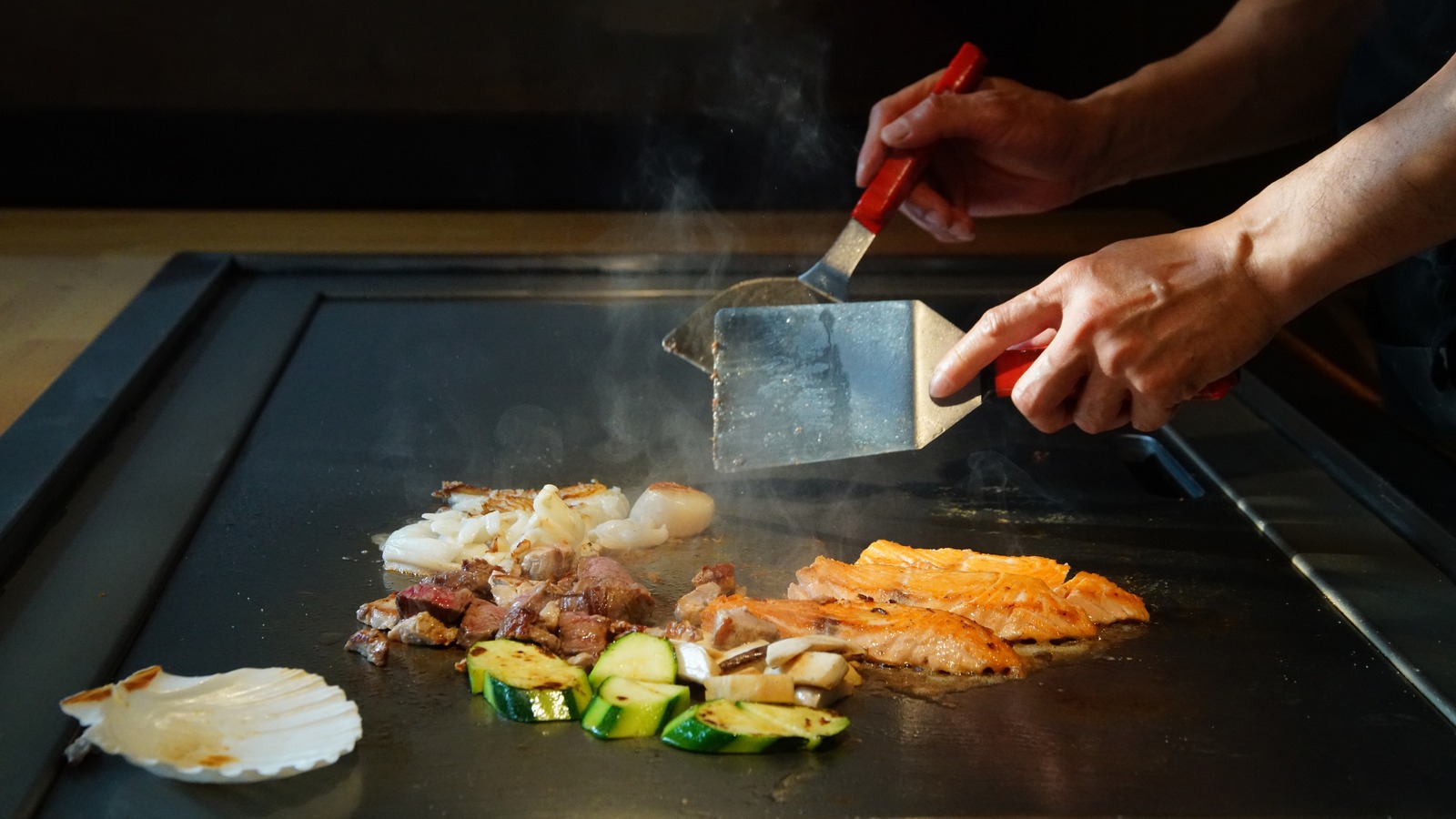Growing up, I used to love going to a local Japanese steakhouse on special occasions. It was unlike any other restaurant in the area — everyone sat at large tables equipped with iron griddles, and the chefs would cook your dinner right in front you, all while cracking jokes, tossing eggs into their hats, and making onion volcanoes erupt with fire. Many Americans probably recognize this sort of dinner-and-a-show place as a hibachi-style restaurant, and they're all over the country.
But : these sorts of steakhouses are actually called teppanyaki. The term hibachi, misappropriated as it is, actually refers to a different heating method that dates back to Japan's Heian period, which spanned the 8th to 12th centuries — and it wasn't chiefly used for cooking. Hibachi are pots which vary wildly in size, and their main purpose is to warm things, from to your frigid hands.
They're heated with charcoal, and are sometimes confused with another charcoal-heated pot called a shichirin, which is used for grilling. But neither are really all that similar to the teppan: the broad, flat iron griddles which are associated with those entertaining Japanese steakhouses. The Japanese steakhouse in America The history of teppanyaki is actually much more recent, with estimates of its origins ranging from a couple hundred years ago to the early 20th century.
Some sources even place the true birth of teppanyaki as a culinary tradition in the immediate post-World War II era, when allied soldiers wer.



















